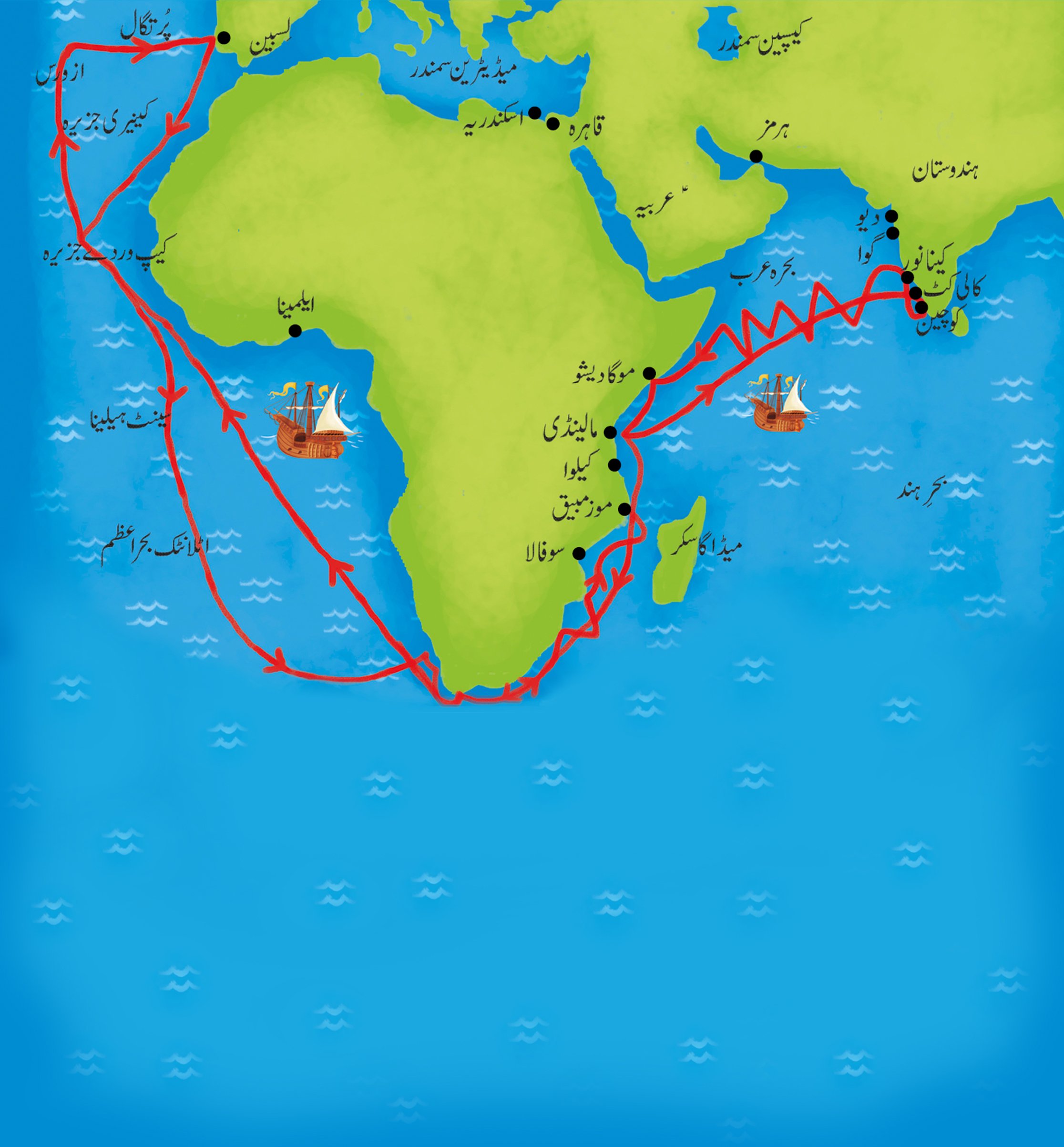

“Good fortune! Good fortune!” one of them broke out as soon as he had clambered aboard. The two men took him to their house and fed him delicacies-wheat bread and honey-then enthusiastically accompanied him back to the ships. “We came,” replied Nunes, with considerable presence of mind, “in search of Christians and spices.” The commonwealth of Islamic trade, from the gates of Gibraltar to the China Sea, was far more extensive than the Portuguese could yet grasp. The Portuguese had girdled the earth only to be spoken to almost in their own tongue. It was almost anticlimactic, a moment in which the world must have shrunk. Nunes found himself addressed in a language of his own continent: “The Devil take you! What brought you here?” The encounter was one of mutual astonishment. The crowd on the beach took him for a Muslim and led him to two Tunisian merchants, who spoke some Castilian and Genoese.

Gama sent one of his convicts ashore with the visitors, a man called João Nunes, a converted Jew, destined to make the most famous landfall in Portuguese history. Four boats came out to see the strange visitors and pointed out Calicut some way off the following day, the boats were back. The Atlantic was no longer a barrier it had become a highway to link up the hemispheres.…Gama paid off the pilot handsomely, called the crew to prayers, and gave “thanks to God, who had safely conducted them to the long-wished-for place of his destination.”įrom the shore there was immediate interest, sparked by both the novelty of the ships themselves, unlike anything sailing the Indian Ocean, and their unlikely timing. Vasco da Gama had ended the isolation of Europe. This first blurred view of India stands as a significant moment in world history. They had sailed 12,000 miles and already lost many men. They had watched their loved ones wading into the sea at Restelo 309 days ago. These were the Western Ghats, the long chain of mountains belting southwestern India, on the Malabar Coast the men could see densely forested slopes, a narrow plain, surf breaking on white sand. As the storm cleared, the pilot was able to recognize the coast: “He told us that they were above Calicut, and that this was the country we desired to go to.” Through the breaking rain, they surveyed India for the first time: high peaks looming through the murk. They had hit the early prelude to the monsoon. The following day shattering rain thundered on the decks, blotting out visibility fierce flashes of lightning split the sky. On Friday, May 18, after only 23 days away from land and 2,300 miles of open water, they spied high mountains. On April 29 they were comforted by the return of the polestar to the night sky, lost to view since the South Atlantic. With a continuous following wind, the diagonal crossing of this new sea was astonishingly quick. ON APRIL 24, WITH THE MONSOON WINDS turning in their favor, the crews headed out to sea “for a city called Calicut.” The turn of phrase suggests that the anonymous diarist on the expedition was hearing this name for the first time-and perhaps the whole expedition, blindly breaking into the Indian Ocean, had only the vaguest sense of their destination. In their armed violence, described by Roger Crowley in the following excerpt from his new book, Conquerors, they set the tone for the next 500 years of Western global expansion. With red crosses on their sails and bronze cannons on their decks, they meant to capture the rich spice trade of Asia and destroy the Islamic cultures they’d first blooded in the Mediterranean. He and his crew of 150 veteran mariners first sailed around the African continent, then crossed the Indian Ocean to land on the Malabar coast of the Indian subcontinent. While Christopher Columbus has gotten most of the ink for his 1492 transit of the Atlantic Ocean, which proved that a hitherto unknown (by Europeans) but populated hemisphere lay over the western horizon, Portuguese mariner Vasco da Gama’s voyage, just five years later in 1497, was longer and introduced Europeans to the far wealthier cultures of south Asia. Portuguese explorers reached India in the 15th century, establishing a legacy of misunderstanding, suspicion, hostility-and violence.


 0 kommentar(er)
0 kommentar(er)
